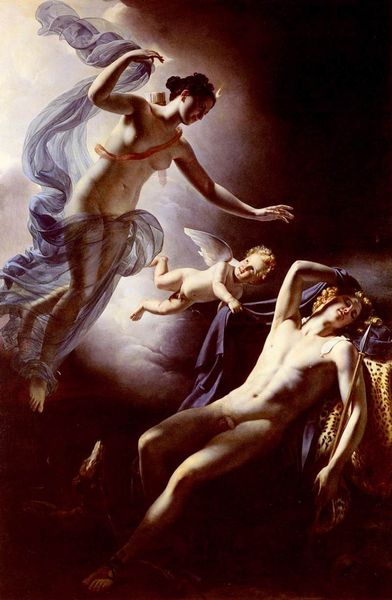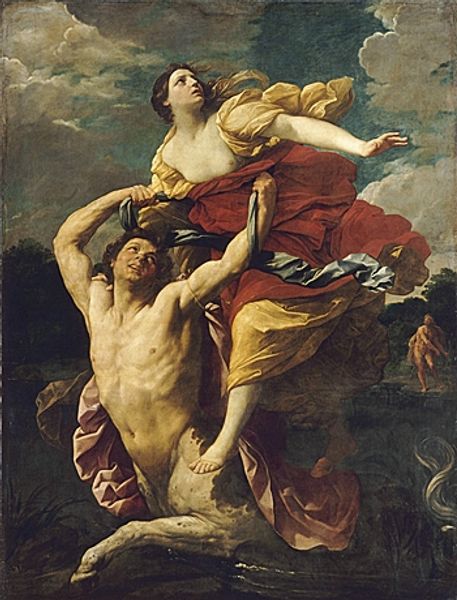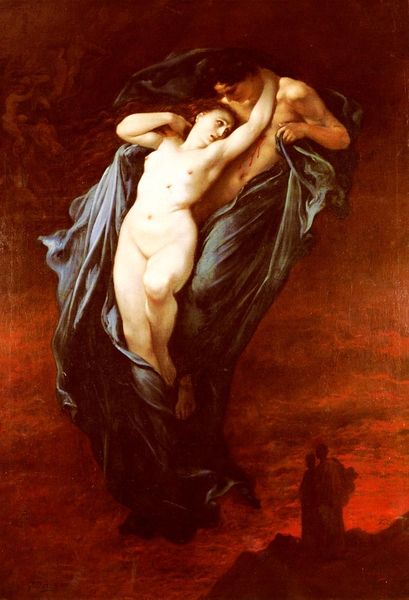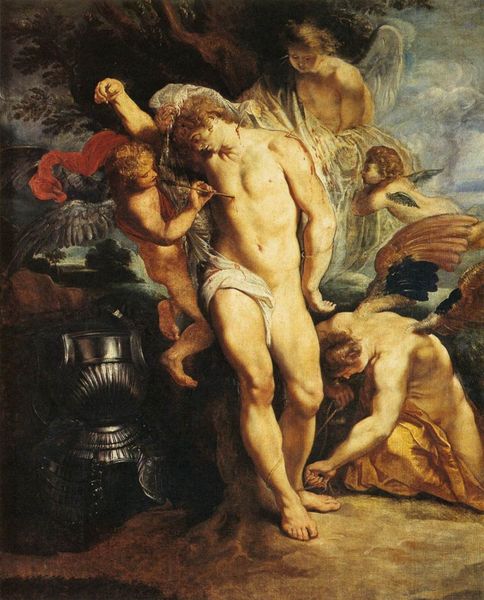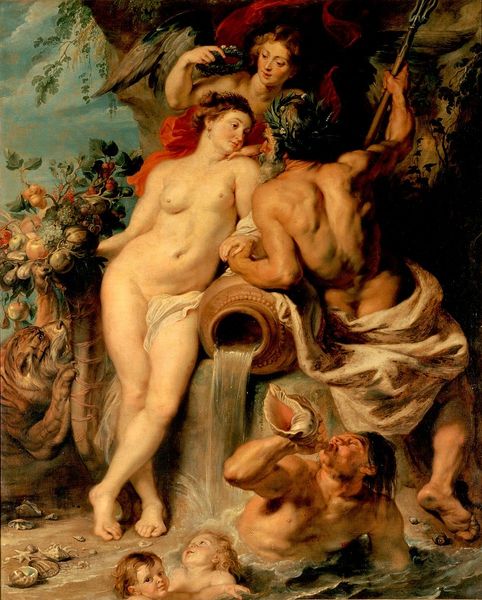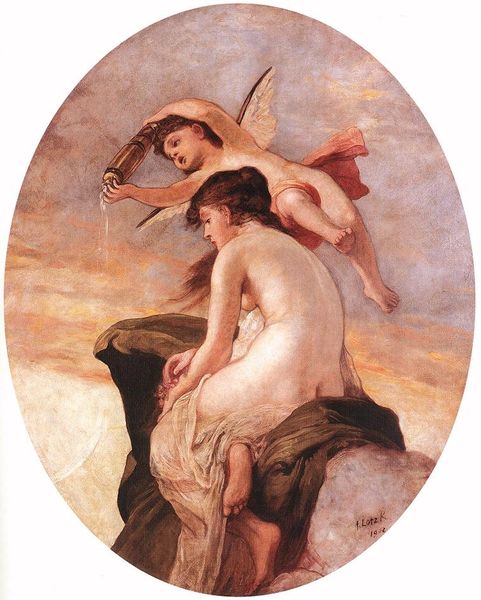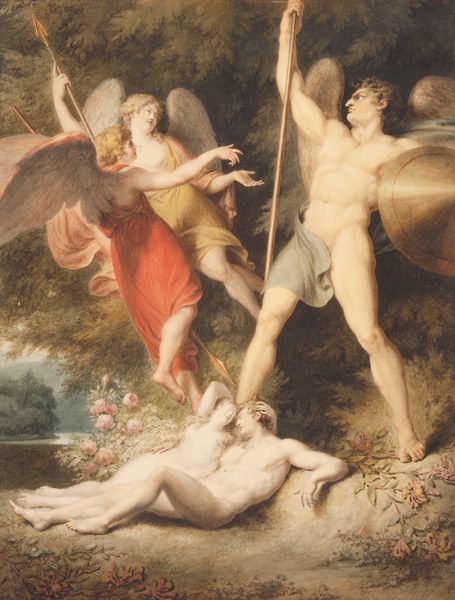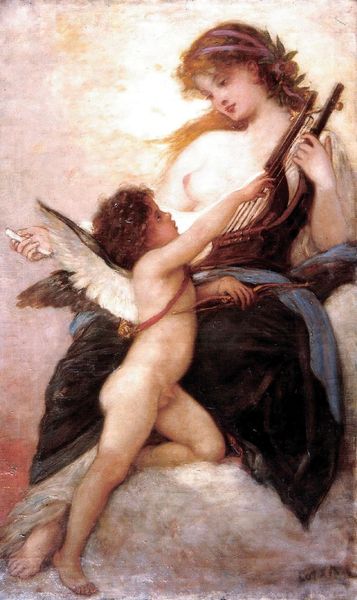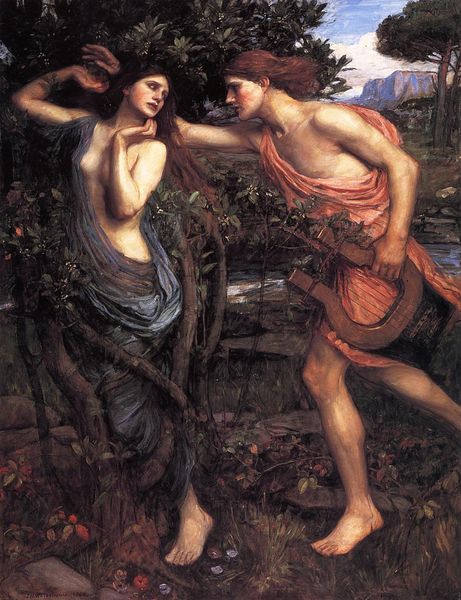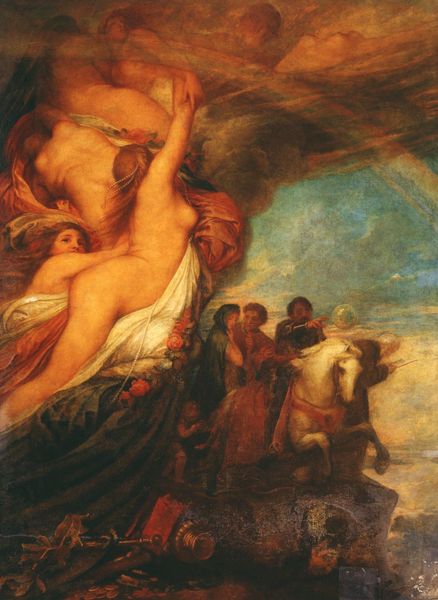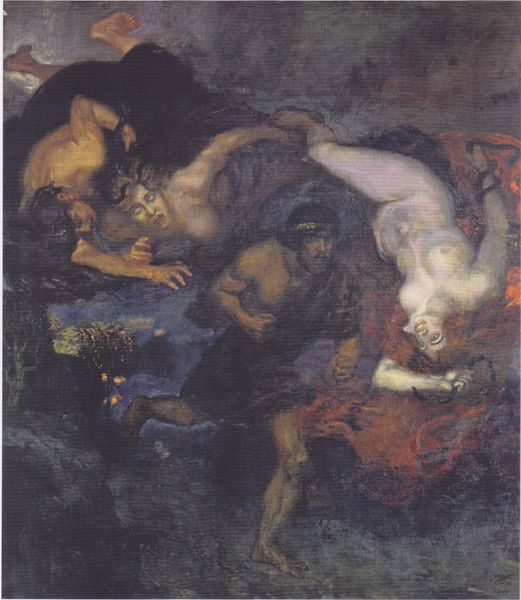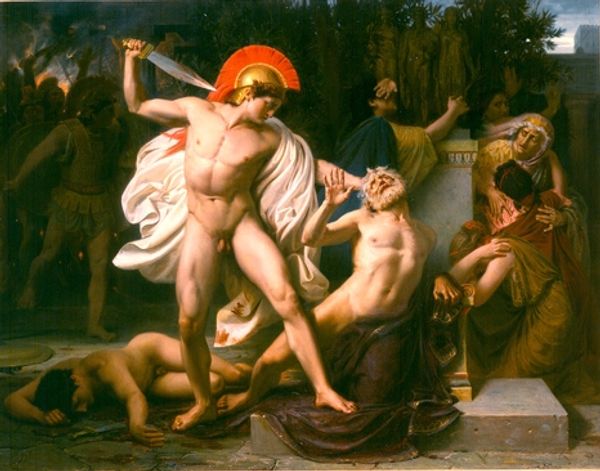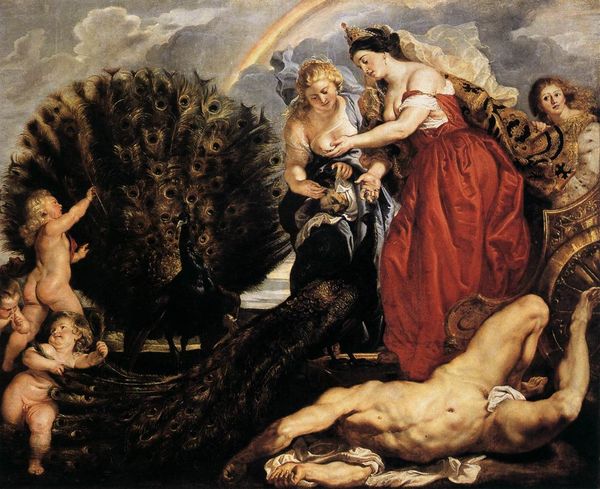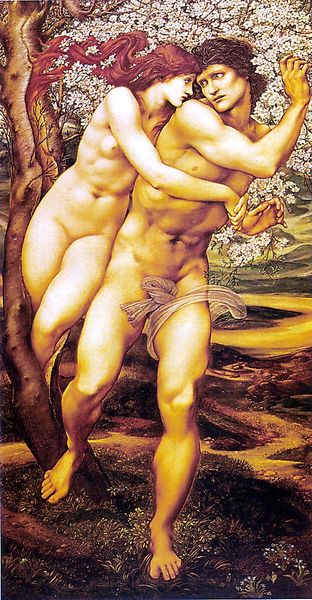
painting, oil-paint
#
allegory
#
painting
#
oil-paint
#
figuration
#
romanticism
#
mythology
#
human
#
history-painting
#
academic-art
#
nude
Copyright: Public domain
Editor: Gustave Boulanger's "The Amorous Dancers"—it seems to be an oil painting—really strikes me with its energetic composition. The figures are so dynamic. What do you make of the way the artist handled materials in this piece? Curator: I think the key here is Boulanger’s careful selection of pigments and their application, creating not just form but also conveying societal values related to labour and production of beauty. What kind of labor do you imagine produced the fabrics depicted, and what class would have afforded these luxurious textiles and leisure time? Editor: That’s a perspective I hadn’t considered. It's easy to get caught up in the classical ideal, but the materials, like the cloth, required labor and signify wealth. Is the way they’re rendered—that thin, gauzy quality— also significant? Curator: Absolutely. Consider how the very creation of that illusion—the trompe l'oeil effect—was a skillful exercise influenced by the Industrial Revolution. It's a display of expertise available because of new painting techniques, chemical advancements and increased availability of affordable materials, catering to bourgeois consumption, and blurring the line between ‘high art’ and material craft. Editor: So, it’s not just the image, but the labor, industry, and consumption woven into the fabric of the piece, both literally and figuratively? That gives me so much more to think about. Curator: Precisely. By focusing on those material processes and the labor surrounding them, we expose the deeper connections between art, economy, and social class. It reveals the historical conditions that made a painting like this possible. Editor: Thanks! Now I see it’s about more than just dancers in a field. It tells a bigger story.
Comments
No comments
Be the first to comment and join the conversation on the ultimate creative platform.
